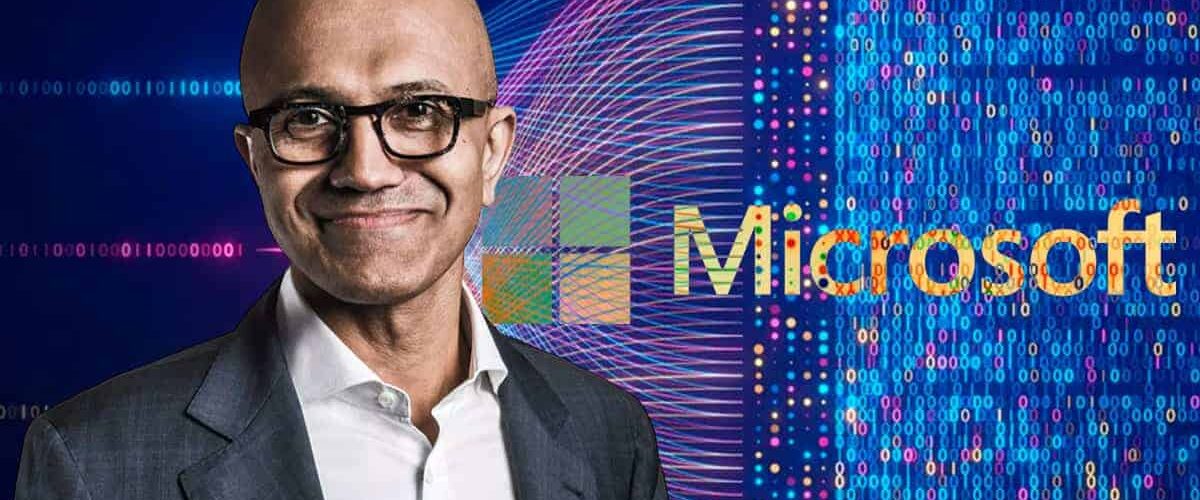A sample module in the section ‘How We Got Here’ in the work-in-progress ‘The Story of Excel’. By Hiran de Silva. Narrated by Paul in the video TBA.
In the previous module, we explored the origins of the client-server architecture, a technological revolution dating back to the early 1990s. This shift profoundly impacted how digital systems operate, introducing the concept of separating data from applications and storing it centrally, so all organizational functions could access, update, and trigger actions based on the same unified data source. This foundational change set the stage for today’s integrated, transparent technologies—email, messaging, cloud-based applications, and much more. In this module, we’ll see how Microsoft, led by visionaries like Satya Nadella and Bill Gates, championed this model within Microsoft Office, creating an ecosystem that harnessed Excel, Access, and other Office tools to enable seamless connectivity and business-wide automation.
Microsoft’s Implementation of the Hub and Spoke Model
In the early 1990s, Microsoft unveiled its vision for a connected office ecosystem during a groundbreaking telecast known as DevCast. In the 1993 broadcast, a young Satya Nadella introduced Microsoft’s practical application of client-server architecture, now referred to as the “Hub and Spoke” model. This demonstration used Excel to illustrate how a spreadsheet could query a centralized stock control database and automatically update with new data, such as stock reorder alerts. Previously, spreadsheets were largely isolated tools—connected only by complex, often unreliable external links. Nadella’s demonstration was a revelation, showing how data from a central hub could directly interact with multiple Excel files, transforming standalone spreadsheets into interactive, real-time tools.
By 1997, Microsoft incorporated this connectivity into Office with the launch of ActiveX Data Objects (ADO). ADO enabled bi-directional data flow between Excel and centralized databases, allowing spreadsheets to communicate effortlessly with Access databases or SQL servers. This integration represented the digital nervous system of Office, which Bill Gates later championed, envisioning an ecosystem where applications could react and adapt to each other as seamlessly as the human nervous system. Gates’ analogy of a car being customized based on real-time information—like changing the spray color to match a customer’s preference in production—vividly illustrated how data-driven processes could automate tasks across departments without manual intervention.
ActiveX Data Objects (ADO): The Backbone of Integration
The significance of ADO cannot be overstated. With ADO, Excel users gained the ability to connect, update, and retrieve data from a central database. No longer did spreadsheets need to function in silos. This new functionality enabled a powerful change: no more need to consolidate data manually, and no more external links to aggregate spreadsheet data across departments. And yet, despite these advances, many organizations continue using outdated, manual methods even today, often unaware of the built-in capabilities introduced over 30 years ago.
ADO serves as the “glue” linking Office applications in a collaborative, client-server environment. With this capability, Excel can interact not only with other spreadsheets but also with Access or even cloud-based SQL databases. In practice, this means that activities in Excel—such as stock level updates—can automatically trigger responses across the organization, much like how a change in the supply chain system could directly impact order fulfillment in real time.
Real-World Applications: Streamlining Enterprise Processes with Excel and ADO
One powerful example of ADO’s potential is its role in accounting processes. By separating data from spreadsheets, monthly accounting cycles—like budgeting, reporting, and reforecasting—become smoother and more efficient. With a centralized database, multiple spreadsheets can access and update data simultaneously, drastically reducing redundancy and ensuring data consistency. This structure is vital for any enterprise that aims to streamline operations and improve accuracy in its financial reports and forecasts.
Similarly, in a customer service scenario, ADO enables call handlers to enter order data that triggers dispatch notes in the warehouse—without needing to send spreadsheets manually. With real-time, multi-user capabilities, a single update from one user can drive automatic updates across other relevant systems, aligning efforts and minimizing manual steps.
A Vision for Global Connectivity
Microsoft’s client-server model was a significant leap forward, but it was only the beginning. With the advent of cloud technology, this idea has evolved on a global scale. Now, spreadsheets and databases are not limited to local machines—they have global reach. Excel files can be shared and updated worldwide, providing real-time data access and collaboration on a scale that was once unimaginable. Yet, even today, many organizations and users are still adapting to the potential of these tools, often unaware of how to fully leverage the power at their fingertips.
Through this course, you’ll continue to uncover these capabilities. Having already experienced an instant gratification exercise that demonstrated these concepts in action, you’ve glimpsed how separating data from spreadsheets can transform a business process. As we move forward, we’ll delve deeper into practical examples, equipping you with the skills to implement client-server architecture in your organization.
Moving Ahead
In the next lesson, we’ll revisit examples where data is separated from spreadsheets, allowing you to see firsthand the difference this can make. This approach not only brings flexibility and efficiency but also enhances your role as a data professional, offering tools that keep data connected, secure, and responsive. This journey, inspired by Satya Nadella, Bill Gates, and the engineering teams at Microsoft, highlights a legacy of innovation that continues to transform how we work with data.
Thank you, and let’s dive deeper into the world of connected data.




Add comment